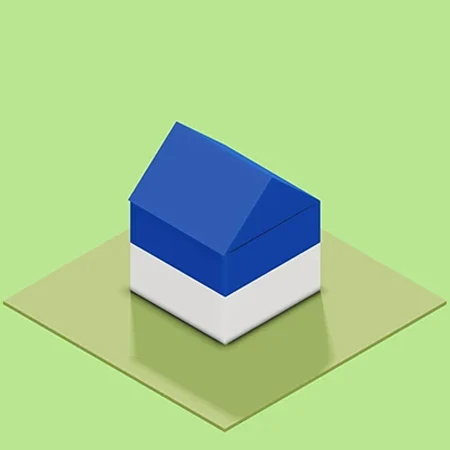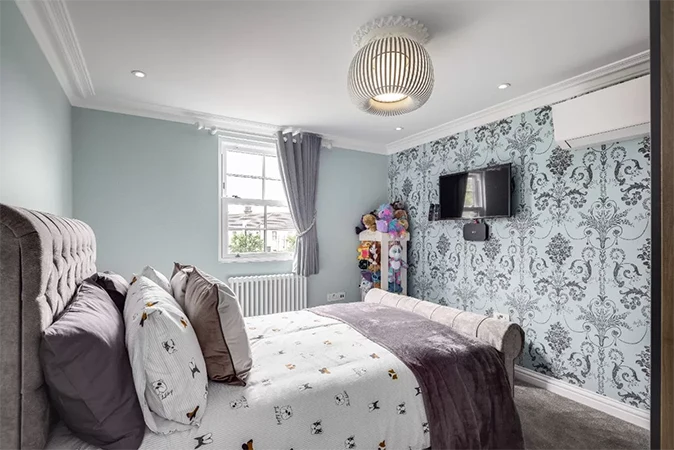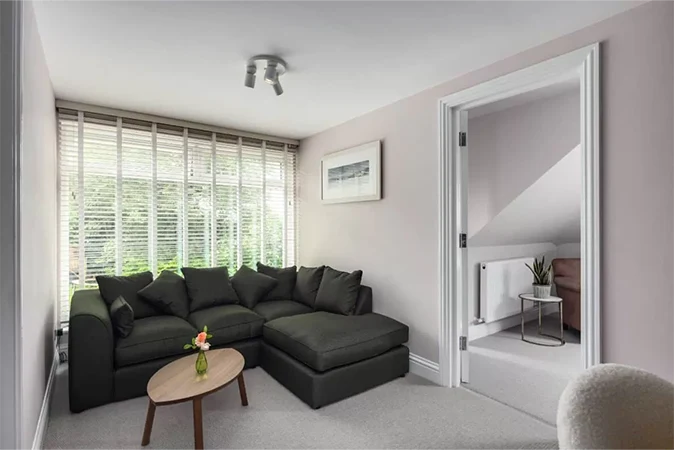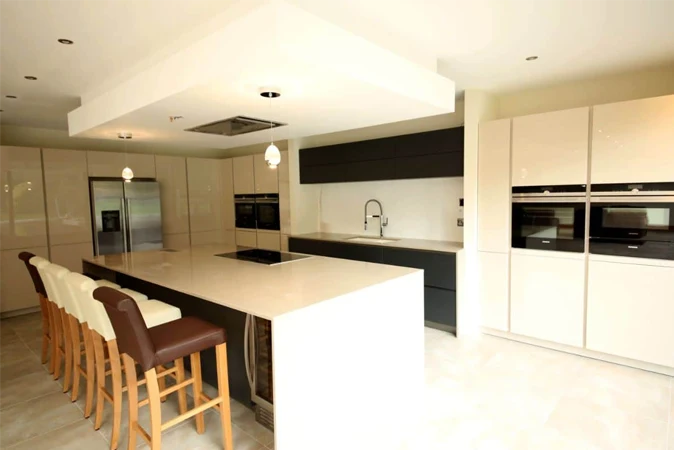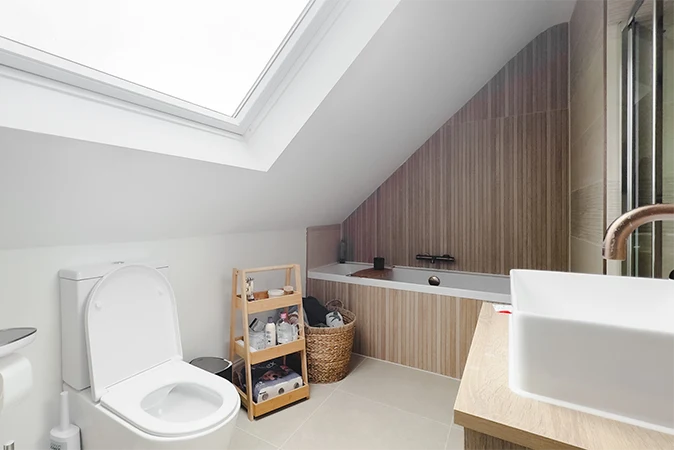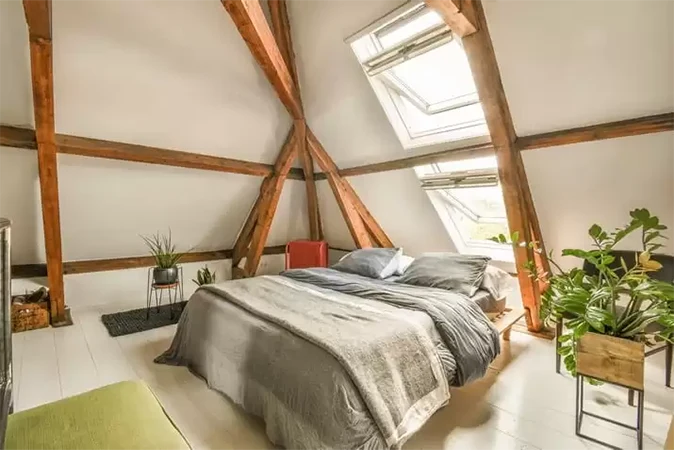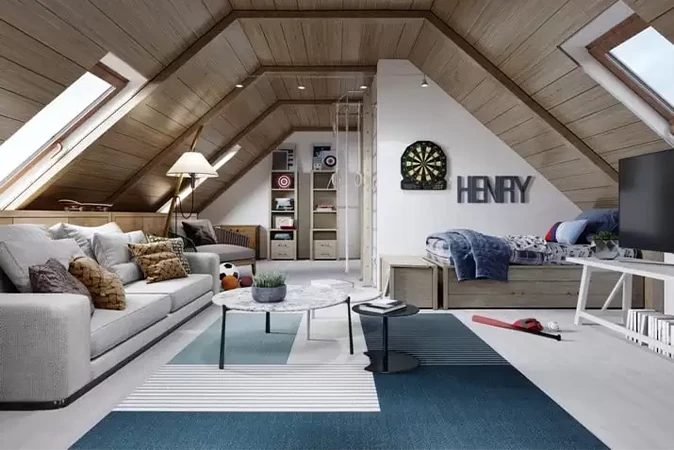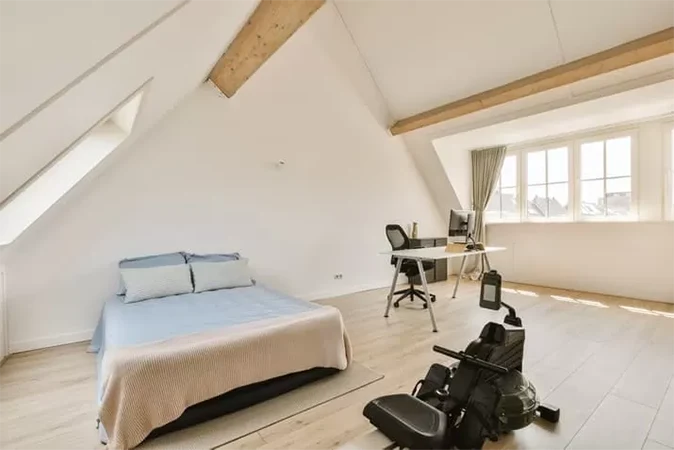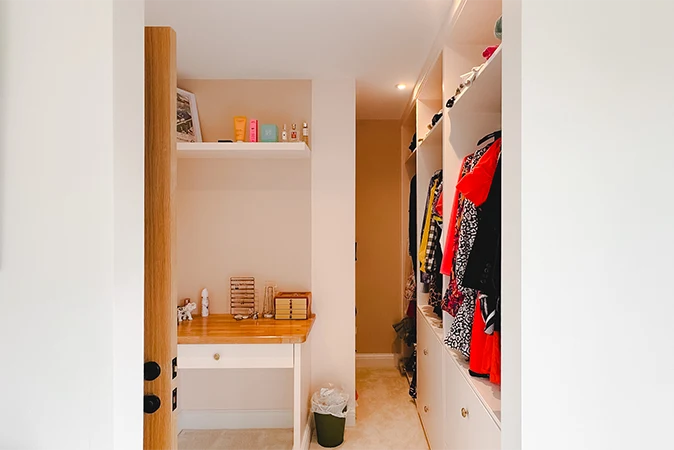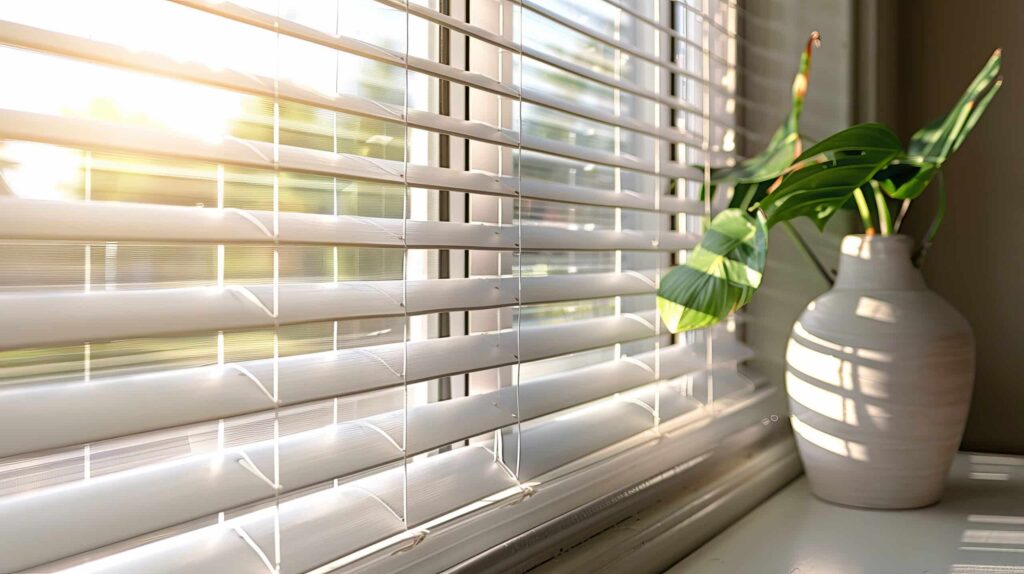Understanding the Importance of Natural Light
Natural light is more than just a design element; it plays a crucial role in the functionality and comfort of any space. In a loft conversion, where space is often limited, the influx of natural light can make the area feel more spacious and open. Moreover, natural light positively impacts your well-being, reducing the need for artificial lighting and contributing to a healthier living environment. Properly designed loft conversions can harness the sun’s natural rays to create a warm, inviting atmosphere that enhances every aspect of daily life.
Strategic Window Placement
The placement and size of windows are key factors in optimising natural light. One of the most effective ways to flood your loft with light is by installing large windows on multiple sides of the room. This allows sunlight to enter from different angles throughout the day, ensuring consistent illumination.
Dormer windows are a popular choice for loft conversions, offering both light and additional headroom. By extending vertically from the sloping roof, dormer windows create more usable space within the loft while allowing natural light to pour in. These windows can be positioned strategically to capture the most sunlight, particularly on south-facing roofs, which receive the most sunlight throughout the day.
Velux or roof windows are another excellent option for maximising light. These windows are installed flush with the roofline, making them ideal for loft conversions where maintaining the original roof shape is a priority. Velux windows can be placed in groups to create a dramatic effect or positioned to catch the morning or afternoon sun, depending on the orientation of your home.
Incorporating Skylights
Skylights are an innovative solution for bringing natural light into areas that may otherwise be difficult to illuminate. In a loft conversion, where wall space is often limited due to the sloping roof, skylights offer a way to channel light directly from above. They can be installed in various sizes and shapes, depending on the layout of your loft and your design preferences.
One of the main advantages of skylights is their ability to provide even, diffused light throughout the day. Unlike traditional windows, which may cast shadows depending on the sun’s angle, skylights distribute light more uniformly, creating a soft, ambient glow. Additionally, skylights can be fitted with blinds or shades to control the amount of light entering the room, offering flexibility depending on your needs.
Choosing the Right Glass
The type of glass used in your windows and skylights can significantly impact the quality and quantity of light that enters your loft. Low-emissivity (Low-E) glass is a popular choice for loft conversions, as it allows natural light to enter while minimising heat loss. This type of glass has a special coating that reflects heat back into the room during winter while keeping it out during summer, making your loft conversion more energy-efficient.
Tinted or frosted glass can also be used strategically to diffuse light and reduce glare, particularly in areas where direct sunlight might be too intense. This can be particularly useful if your loft conversion faces a busy street or if privacy is a concern. The key is to balance the need for natural light with practical considerations like energy efficiency, privacy, and comfort.
Reflective Surfaces and Light Colours
Once natural light enters your loft, the way it interacts with the interior surfaces plays a significant role in how bright and airy the space feels. Reflective surfaces, such as glossy tiles, glass, and metallic accents, can bounce light around the room, enhancing the overall brightness. Mirrors are particularly effective in this regard, as they can be positioned to reflect light from windows or skylights, effectively doubling the amount of light in the room.
The colour palette you choose for your loft conversion is another critical factor. Light colours, especially whites and soft pastels, reflect more light than darker hues, making the space feel more open and inviting. Painting walls, ceilings, and even floors in light shades can help maximise the effect of natural light. Additionally, choosing furniture and decor in lighter tones can contribute to the overall brightness, creating a cohesive and luminous environment.

Open Plan Design
The layout of your loft conversion can also influence how natural light is distributed throughout the space. An open plan design, where rooms flow into one another without the obstruction of walls, allows light to travel freely from one area to another. This is particularly effective in smaller loft conversions, where the goal is to create a sense of spaciousness.
By minimising partitions and embracing an open layout, you can ensure that natural light reaches even the furthest corners of your loft. If privacy or functional separation is needed, consider using glass partitions or sliding doors, which can provide division without blocking light.
Enhancing Light with Artificial Lighting
While natural light is the primary focus, it’s important to consider how artificial lighting can complement and enhance the overall illumination of your loft conversion. Layered lighting, which combines ambient, task, and accent lighting, can create a dynamic and flexible lighting scheme that adapts to different times of day and activities.
Recessed lighting, wall sconces, and floor lamps can be strategically placed to highlight architectural features and provide additional light where needed. Dimmer switches allow you to control the intensity of the light, creating a cozy atmosphere in the evening while still maintaining the brightness of the space during the day.
Bringing the Outdoors In
Biophilic design, which incorporates natural elements into interior spaces, is a growing trend in modern home design. In a loft conversion, this can be achieved by integrating indoor plants, natural materials, and views of the outdoors. Large windows that frame a garden, park, or tree-lined street can bring the beauty of nature into your loft, enhancing the connection between the indoors and outdoors.
Indoor plants not only add a touch of greenery but also help purify the air and create a more relaxing environment. Positioning plants near windows allows them to thrive in the natural light while also softening the lines of the room and adding visual interest.
Ventilation and Airflow
Maximising natural light in your loft conversion goes hand in hand with ensuring proper ventilation and airflow. Windows and skylights that can be opened provide a source of fresh air, preventing the space from becoming too hot or stuffy, especially in the summer months. Roof windows, in particular, are effective at creating a natural ventilation system, as warm air rises and escapes through the top, drawing in cooler air from lower levels.
Proper ventilation also reduces the risk of condensation and moisture buildup, which can damage your loft conversion over time. By combining natural light with good airflow, you create a healthier and more comfortable living space.
Working with LMB Lofts
At LMB Lofts, we bring over 30 years of experience and a commitment to excellence to every project. We understand that each loft conversion is unique, and we work closely with our clients to design spaces that maximise natural light while meeting their specific needs and preferences. Our team of skilled professionals is dedicated to delivering high-quality craftsmanship, ensuring that your loft conversion is both beautiful and functional.
We take pride in our attention to detail and our ability to tailor each project to the unique characteristics of the property. Whether you’re looking to create a bright and airy bedroom, a sunlit home office, or a versatile living area, we have the expertise to bring your vision to life.
The Role of Roof Orientation in Natural Light Exposure
One often overlooked factor in maximising natural light during a loft conversion is the orientation of your roof. The direction your roof faces can significantly influence how much sunlight enters the space throughout the day, making it a critical consideration during the design phase. South-facing roofs typically receive the most consistent daylight, which makes them ideal for installing dormer or Velux windows. East-facing roofs will benefit most from morning sunlight, while west-facing slopes capture the afternoon and evening sun—useful if the loft space will be used later in the day, such as for a bedroom or lounge area. Understanding how the sun moves across your property allows you to plan window placement more effectively and make the most of passive solar gain, which can also help with heating in cooler months. During your design consultation, a professional loft specialist should assess your home’s positioning and roof angles to ensure optimal light capture. By taking roof orientation into account, you can ensure a well-lit loft that aligns with your natural daily rhythms and enhances overall comfort.
Natural Light and Mental Wellbeing
Beyond aesthetics and energy efficiency, maximising natural light in your loft conversion has proven benefits for your mental and emotional wellbeing. Numerous studies have shown that exposure to natural daylight can improve mood, increase productivity, and regulate sleep patterns by supporting your circadian rhythm. This is particularly important if your loft will be used as a home office, creative studio, or a restful bedroom space. Natural light has also been linked to reduced stress and anxiety, creating a calming atmosphere that artificial lighting often struggles to replicate. A well-lit environment can feel more welcoming and uplifting, helping to transform the loft into one of the most enjoyable areas of your home. For families, this is especially beneficial—creating a bright and engaging space for children to play or study, or a peaceful retreat for adults. When designing your loft, it’s worth considering how daylight will flow through the space at different times of day. The inclusion of large windows, skylights, and even glass doors can all contribute to a naturally bright atmosphere that supports healthier, happier living.
Combining Privacy with Natural Light
While large windows and skylights are excellent for brightening your loft, it’s also important to strike a balance between light and privacy—especially in urban or suburban areas like Balham, Dulwich, or Clapham where neighbouring homes are close by. Fortunately, there are several clever design solutions that allow you to enjoy an abundance of natural light without compromising your personal space. High-level windows are a great option for letting in sunlight while limiting direct lines of sight from neighbouring properties. Frosted or obscure glass is another solution, particularly in bathrooms or bedrooms, as it allows light in while obscuring visibility from the outside. Skylights, by design, offer excellent privacy because they are positioned on the roof, yet still bring in generous amounts of light. Blinds, shutters, and smart glass technologies can also give you more control over both light and visibility throughout the day. These features ensure your loft feels open and bright without making it feel exposed. When planned thoughtfully, you can enjoy a sunlit, airy space that remains comfortably private. Our loft conversions in Balham are especially popular to capture those Summer days sunlight.
Passion For Creating Dream Spaces
Maximising natural light in your loft conversion is a vital aspect of creating a space that is both functional and aesthetically pleasing. By carefully considering window placement, choosing the right glass, incorporating reflective surfaces, and embracing an open plan design, you can transform your loft into a bright, inviting sanctuary. At LMB Lofts, we are passionate about helping our clients achieve their dream spaces, and we are here to guide you every step of the way. Whether you’re at the planning stage or ready to start your loft conversion, we invite you to contact us to discuss how we can help you maximise the potential of your loft.






